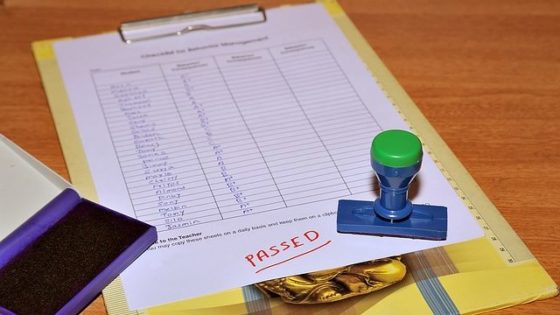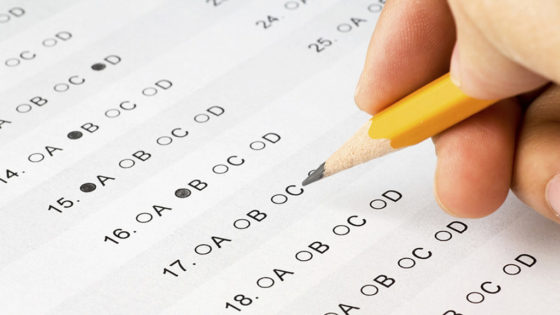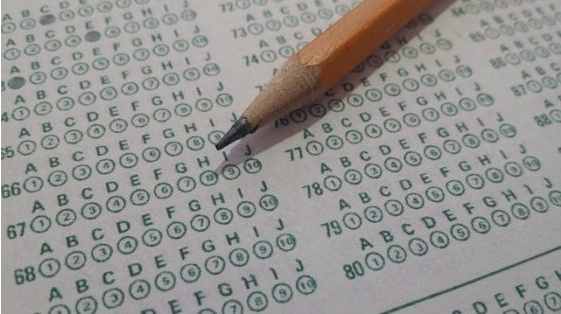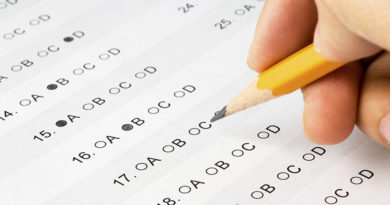Phlebotomy Certification Practice Test 4
This is the fourth in a planned series of Phlebotomy Practice Tests:
1. Which type of hepatitis is not a bloodborne pathogen?
A. Hepatitis A
B. Hepatitis B
C. Hepatitis C
D. Hepatitis D
2. What color is the stopper for the evacuated tube that contains a sodium citrate additive?
A. Green
B. Orange
C. Purple
D. Blue
3. Which of the following is used to separate plasma or serum from red blood cells?
A. Centrifuge
B. Spectrophotometer
C. Autoclave
D. Hemocytometer
4. What is a nosocomial infection?
A. An infection acquired in a healthcare facility
B. An infection caused by an inadvertent needlestick
C. An infection acquired at school
D. Any of the above
5. What is the primary cause of a collapsed vein during a venipuncture?
A. Tourniquet applied too tightly
B. Tourniquet applied too loosely
C. Blood being withdrawn too quickly
D. Defective or malfunctioning tube
6. Which of the following organizations requires employees to be assessed for competency?
A. COLA
B. The Joint Commission
C. CAP
D. All of the above
7. The use of Betadine for cleansing the patient’s skin can interfere with the analysis of which of the following?
A. Hemoglobin
B. Glucose
C. Bilirubin
D. Cholesterol
8. Which of the following statements regarding safe use of tube holders and needles is TRUE?
A. After disposing of the needle, clean the tube holder with an alcohol pad
B. Discard both the needle and tube holder as a unit into a sharps container
C. Disconnect the needle from the tube holder so the holder can be reused
D. Unscrew the needle from the tube holder and sterilize them both for reuse
9. In the United States, which of these bloodborne diseases is most likely to transmitted by needlestick?
A. Hepatitis C
B. Hepatitis D
C. Viral hemorrhagic fevers
D. Chagas Disease
10. Which of the following is the key principle of Universal Precautions?
A. The Human Immunodeficiency Virus (HIV) is the most important bloodborne pathogen
B. The blood and body fluids of all individuals are considered potentially infectious
C. Gloves and gowns provide sufficient protection from blood and body fluids
D. Only patients in isolation rooms are considered to be potentially infectious
11. In a healthcare setting, HBV, HCV, and HIV can be transmitted by which of these?
A. Contact of blood or body fluids with the mucous membranes
B. Contacting non-intact skin without gloves
C. Injuries from sharps
D. All of the above
12. Which of the following could cause a hemolyzed blood specimen?
A. Pulling back on a syringe plunger with gentle pressure
B. Using a 21-gauge needle to fill a 10 ml. red top tube
C. Mixing the blood with the additive or anticoagulant by shaking
D. Inserting a needle into a site where the alcohol has air dried
13. Which of the following is a good way to prevent needlestick injuries?
A. Recapping needles by hand
B. Using safe needle devices and following instructions for their use and disposal
C. Waiting till a sharps disposal container is filled to the top to empty it
D. Activating the safe needle device just before placing it in the sharps disposal container
14. Which of the following organizations governs safe working conditions for employees?
A. OSHA
B. CDC
C. NCCT
D. FDA
15. What type of consequences would require a chain of custody procedure for a specimen?
A. Infectious
B. Legal
C. Dire
D. All specimens require a chain of custody
More Phlebotomy Certification Practice Tests:








